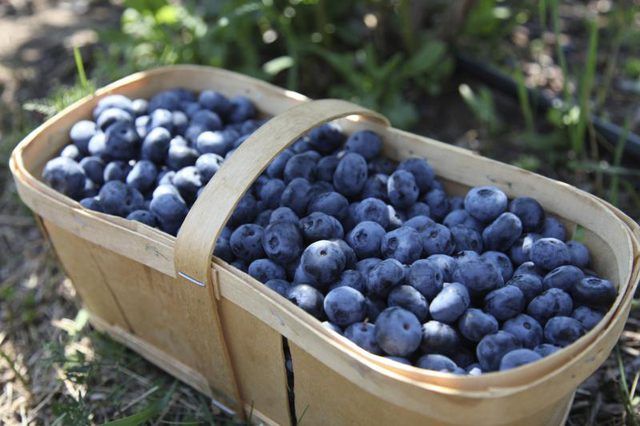Bulbs
Flower Basics
Flower Beds & Specialty Gardens
Flower Garden
Garden Furniture
Garden Gnomes
Garden Seeds
Garden Sheds
Garden Statues
Garden Tools & Supplies
Gardening Basics
Green & Organic
Groundcovers & Vines
Growing Annuals
Growing Basil
Growing Beans
Growing Berries
Growing Blueberries
Growing Cactus
Growing Corn
Growing Cotton
Growing Edibles
Growing Flowers
Growing Garlic
Growing Grapes
Growing Grass
Growing Herbs
Growing Jasmine
Growing Mint
Growing Mushrooms
Orchids
Growing Peanuts
Growing Perennials
Growing Plants
Growing Rosemary
Growing Roses
Growing Strawberries
Growing Sunflowers
Growing Thyme
Growing Tomatoes
Growing Tulips
Growing Vegetables
Herb Basics
Herb Garden
Indoor Growing
Landscaping Basics
Landscaping Patios
Landscaping Plants
Landscaping Shrubs
Landscaping Trees
Landscaping Walks & Pathways
Lawn Basics
Lawn Maintenance
Lawn Mowers
Lawn Ornaments
Lawn Planting
Lawn Tools
Outdoor Growing
Overall Landscape Planning
Pests, Weeds & Problems
Plant Basics
Rock Garden
Rose Garden
Shrubs
Soil
Specialty Gardens
Trees
Vegetable Garden
Yard Maintenance
How to Get the Soil Just Right for Growing Blueberries
How to Get the Soil Just Right for Growing Blueberries. Blueberries (Vaccinium spp.) need soil that is acidic -- in the pH range of 4.5 to 5.5 -- and rich in organic matter, at least six hours of full-sun exposure per day and 1 to 2 inches of water per week. Preparing soil prior to planting and maintaining it on a regular basis will help keep...

Blueberries (Vaccinium spp.) need soil that is acidic -- in the pH range of 4.5 to 5.5 -- and rich in organic matter, at least six hours of full-sun exposure per day and 1 to 2 inches of water per week. Preparing soil prior to planting and maintaining it on a regular basis will help keep blueberry production at optimal levels. Reducing soil's acidity is a process that can take several years, and keeping it acidic is necessary. Blueberries are hardy in U.S. Department of Agriculture plant hardiness zones 3 through 7, depending on their variety.
Test the Soil
Using a home soil pH kit, available from home and garden retailers, test the pH level of the soil in the area where you plan to plant blueberries. Alternatively, your county's Cooperative Extension office will perform the test for you for a fee. If the soil's pH level is over 6.5, then consider an alternative to blueberries because maintaining the soil pH range necessary for successful blueberry production may not be possible. Determined gardeners who live in areas where the soil pH level is too high for blueberry cultivation, however, often have success with using raised plant beds and imported soil that has the necessary pH range. Blueberries thrive with sufficient drainage, and raised beds help meet that preference.
Incorporate Elemental Sulphur
The addition of elemental sulfur is an effective way to lower soil's pH level, making it more acidic. Because elemental sulfur needs at least six months to react with water in soil and lower the soil's pH level, add it in either spring or fall. Elemental sulfur can be purchased in powder or pellet form from home and garden retailers. County Extension publications also offer guidelines on the application of elemental sulfur to garden soil. Purchase elemental sulfur rather that aluminum sulphate because the latter can be toxic to plants. The amount of elemental sulfur necessary depends on the soil's starting pH level and the desired pH level. It takes 2.4 pounds of elemental sulfur for every 100 square feet of soil to lower loam soil's pH level by one point. The amount of elemental sulfur used should be increased by one-half in clay soil and decreased by one-third in sandy soil. Incorporate the elemental sulfur thoroughly into the soil to a depth of 6 inches.
Retest the Soil Before Planting
Check soil's pH level again before planting blueberry plants. If the pH level is above 5.5, then incorporate more elemental sulfur with the soil. If the pH level lowered to 5.5 or below, dig a planting hole as deep as its respective blueberry plant's root ball and twice the root ball's width, or at least 18 inches wide and 20 inches deep. Fill part of the hole with organic matter such as bark dust, sawdust or peat moss to promote drainage and to provide nutrients. Loosen the outside surface of the plant's root ball before planting, and set the plant in the hole so that the top of its soil line -- where the soil surface was when the plant was in its nursery container -- is 1 to 2 inches above the ground level that surrounds the planting hole. Fill the rest of the planting hole with soil and organic matter. Place a 2- to 4-inch-thick layer of mulch on the soil surface around the plant -- but not touching the plant -- to help protect the blueberry's roots and to curtail weed growth. Avoid using manure or compost containing yard debris because they may have high pH levels. Repeat the planting process for each blueberry plant, and space the bushes about 5 feet apart.
Maintain the Soil Carefully
Retest the soil's pH level every two to three years, and reapply elemental sulfur accordingly to maintain an optimal level. Over time, soil naturally reverts to its previous condition. Mulching blueberry plants well with organic materials that have low pH levels helps keep the soil acidic.